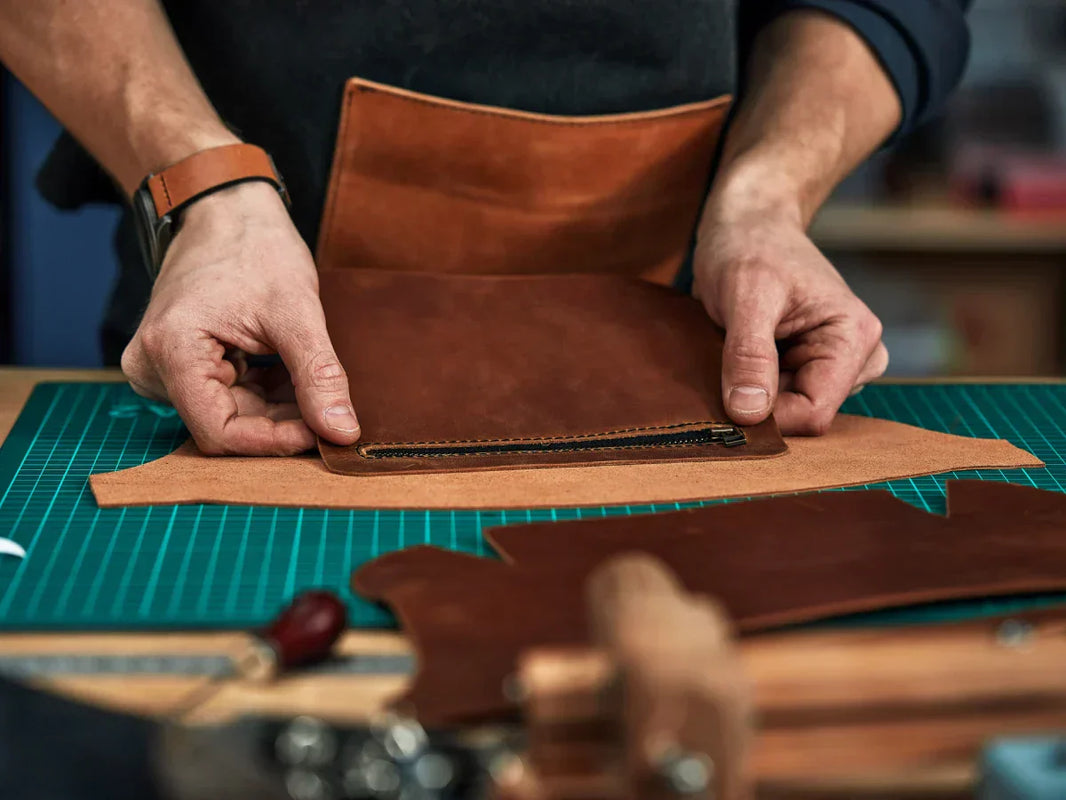Introduction
Leather has always been considered a timeless material for bags, shoes, and accessories. In India, the love for leather bags is rapidly growing, especially among professionals and young urban consumers. But with the rising demand, the market is also flooded with cheap, synthetic imitations like “PU leather” or “faux leather.” Many buyers unknowingly purchase fake leather, believing it to be genuine.
This makes it crucial to understand how to differentiate real leather from synthetic alternatives before investing in a bag that should last for years.
What is Genuine Leather?
The term “genuine leather” often confuses buyers. At its core, genuine leather is made from animal hide (commonly cow, buffalo, or goat). Depending on how the hide is processed, different grades exist:
-
Full-Grain Leather – The highest quality, with natural texture and imperfections intact. Extremely durable and ages beautifully.
-
Top-Grain Leather – Slightly sanded for a smoother look but still durable and premium.
-
Corrected/ Split Leather – Lower quality, made from inner layers of hide, often coated to look real.
When we say “genuine leather bags,” we usually mean full-grain or top-grain varieties, as they are the most reliable and long-lasting.
Why Fake Leather Dominates the Indian Market
India’s leather goods industry is massive, with markets in Delhi, Kolkata, Kanpur, and Mumbai offering thousands of options. However, a large percentage of bags labeled as “leather” are actually synthetic.
Reasons include:
-
Affordability – PU leather is cheaper to produce.
-
Mass Production – Synthetic leather can be made in bulk with uniform texture.
-
Lack of Awareness – Many customers can’t tell the difference.
-
Deceptive Marketing – Sellers often use terms like “vegan leather,” “art leather,” or simply “leather” to mislead buyers.
5 Foolproof Ways to Identify Real Leather
-
The Smell Test
Real leather has a natural, earthy, and slightly musky smell, while synthetic leather smells of plastic or chemicals. -
The Touch Test
Genuine leather feels soft, flexible, and slightly grainy. Fake leather feels smooth, stiff, and often too perfect. -
The Water Absorption Test
If you put a tiny drop of water on genuine leather, it absorbs it slowly (because it’s porous). PU leather repels water completely. -
The Grain Pattern
Real leather has natural irregularities – small pores, wrinkles, or scars. Fake leather usually has a uniform, machine-printed texture. -
The Edge Check
Real leather edges are rough and fibrous. Fake leather edges look smooth, sealed, and plasticky.
Why Genuine Leather Bags Last Longer
A well-crafted genuine leather bag can last for decades if cared for properly. Unlike synthetics, leather develops a rich patina over time, making it even more beautiful. It withstands wear and tear, supports heavy weight, and remains timeless in design. On the other hand, PU bags start peeling, cracking, or fading within a few years.
Conclusion – Choose Authentic, Choose Sustainable
In India, where leather craftsmanship has centuries-old heritage, choosing genuine leather is not just about fashion but also about supporting tradition and sustainability. While PU leather may seem like an affordable shortcut, genuine leather bags offer unmatched durability, elegance, and value.
So, the next time you shop for a leather bag in India, remember these identification tips – because investing in authenticity is always worth it.





